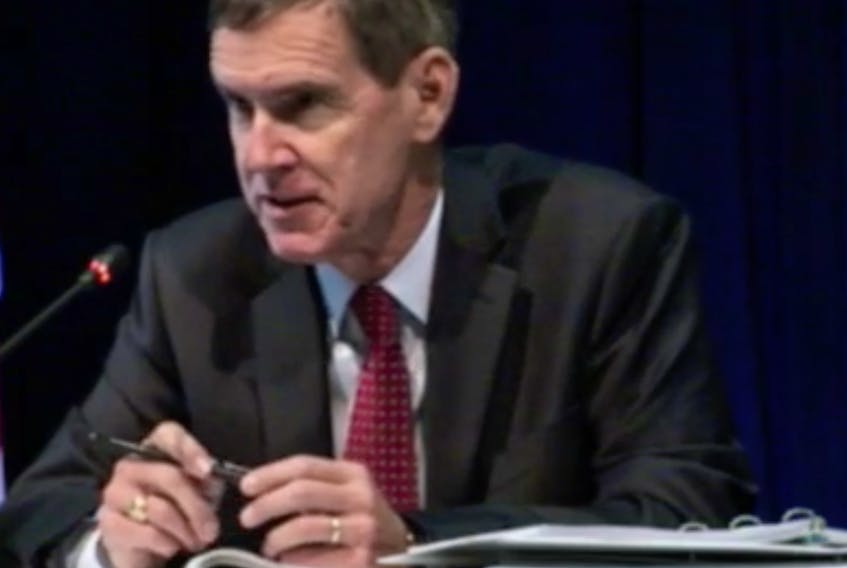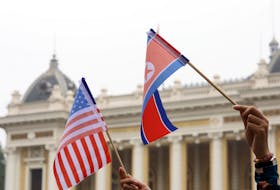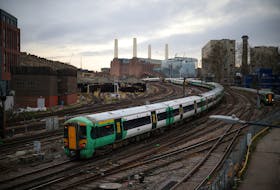HAPPY VALLEY-GOOSE BAY
A forensic audit team has determined Nalcor Energy made “potential misstatements” in examining the options for powering Newfoundland and Labrador, ahead of the decision to sanction the Muskrat Falls Hydroelectric Project.
The costs of an “interconnected” power option – where the island of Newfoundland would be linked to the mainland of Canada – was potentially understated, according to auditors David Malamed and Scott Shaffer, in a report filed to the inquiry now reviewing the project.

The cost of an “isolated” power option – where the island of Newfoundland and its power system would not be linked to the mainland – was potentially overstated, according to the report.
“The combination of these potential misstatements may have resulted in the interconnected island option (the option selected by Nalcor) no longer being considered the least cost option at the time of sanctioning,” it states.
Ultimately, it may not have been the cheapest option.
In addition, the auditors found Nalcor Energy did not have talks with Hydro Quebec about the potential purchase and import of power, before dismissing that as an option early on.
“Further analysis of these options may have led to a different decision (in how to best supply power),” the report states.
The isolated island option for supplying power and the interconnected (ultimately Muskrat Falls) option were compared by Nalcor Energy using what’s called a determination of “cumulative present worth” or CPW.
Many factors get included in the CPW including:
- Existing power generation and capability
- The load forecast (or demand for power)
- Capital cost estimates
- Fuel costs
- Operating and maintenance costs
- Discount rates
In looking at the option of keeping the island of Newfoundland isolated, the auditors observed Nalcor Energy didn’t consider the possibility of a decrease in demand from industrial customers, the possibility of managing power demand, and relied on economic forecasts from the province’s Department of Finance where figures used (on population and housing starts) were different from those of the Conference Board of Canada in 2012.
“Price elasticity (the effect of price on demand) was not included in planning load forecast for the general service/commercial customer sector of Newfoundland and Labrador Hydro’s utility customer (Newfoundland Power),” the report states.
The potential cost associated with that option were ultimately higher than they might have been.
In looking at the Muskrat Falls option, Nalcor Energy determined the contingency costs for the build at a level referred to as P50, while the auditors stated, “an independent consultant used by Nalcor informed us that P-factors [for determining contingency to factor in] ranging from P70 to P90 are more reasonable.”
If the corporation had determined the contingency it needed at a P90 value, the estimated capital costs would have increased by about $767 million, according to the auditors. In turn, when factored in, this would have driven up the CPW, or cumulative present worth analysis, used to compare the power options.
It was also noted the operating and maintenance costs for the Muskrat Falls project have changed, as announced under Nalcor Energy president and CEO Stan Marshall, from an estimated $34 million a year to $109 million a year. This would also mean the values used for the interconnected option, at the time of the original decision making on Muskrat Falls, were lower.
The piece of audit work completed on the portion of the project up to the “no or go decision” is, in large part, a mirror of the either-or review the Newfoundland and Labrador Public Utilities Board (PUB) was asked to do, in a special reference from the Progressive Conservative government of the day. That was in the lead-up to the Muskrat Falls project sanctioning.
The PUB ultimately determined not enough information was available to it to provide a firm decision on what was the least-cost option.
Auditors with Grant Thornton are set to continue testimony at the Muskrat Falls Inquiry’s public hearings into next week in Happy Valley-Goose Bay. There is also a further piece of work, assessing the project’s actual construction, due to be filed ahead of the second phase of the public inquiry, in 2019.









